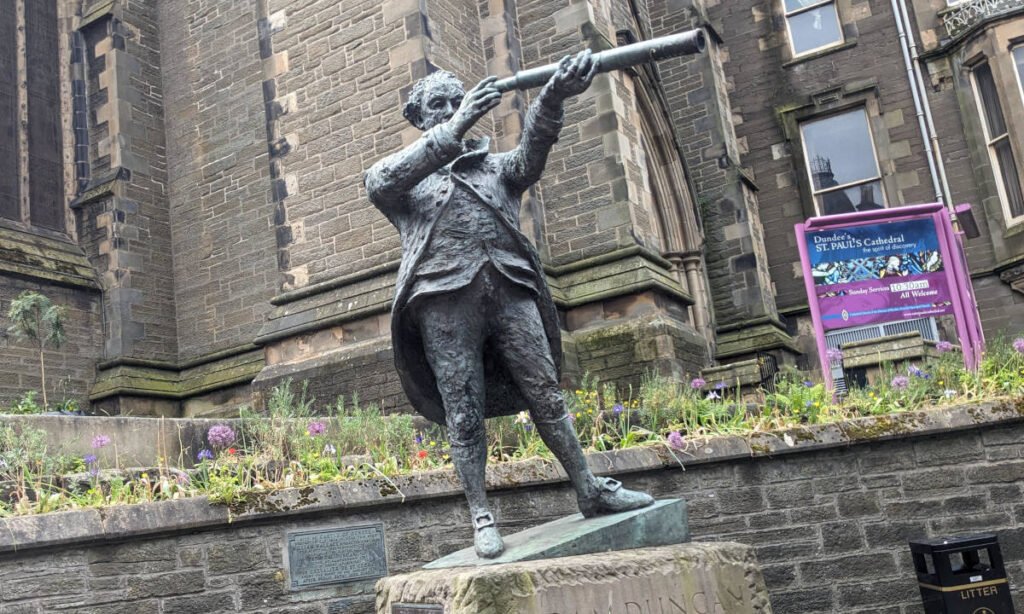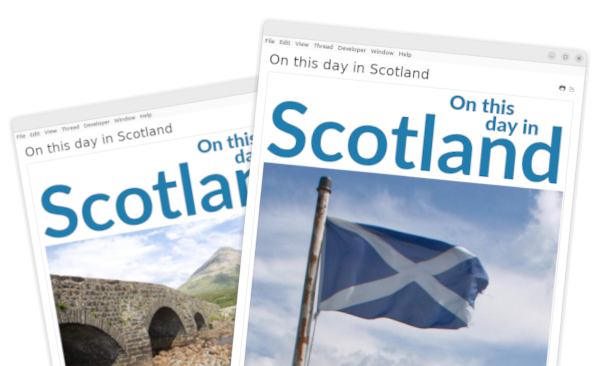On this day in 1731
Naval hero Admiral Adam Duncan is born in Dundee
Dundee-born Adam Duncan joined the Royal Navy aged 15, and served for the next 17 years. He saw action off the coast of North America, Cuba, and in the Mediterranean, before retiring, briefly, to his native Dundee. However, he was back at sea within a couple of years, and did service off Gibraltar and Portugal.

Battle of Camperdown
Admiral Duncan is best remembered for his success against the Dutch fleet in the Battle of Camperdown. The Dutch were, at the time, under the influence of France, which was itself still trying to define its place in the world in the wake of the French Revolution. Napoleon Bonaparte was capturing territory on France’s borders, and Britain, to the north, felt the need to defend itself.
To this end, Admiral Adam Duncan was dispatched to the Netherlands to engage the Dutch fleet as it headed for Ireland. Sailing from Great Yarmouth, he spotted the Dutch ships close to the village of Kamperduin – Camperdown in English – from which the ensuing battle took its name.
British triumph
The two sides were evenly matched, with the Dutch possessing 26 vessels to the British contingent of 24, and Duncan directed his ships into the centre of the Dutch formation, so as to split the Dutch fleet in two. It was an unconventional move that paid off.
Every Dutch ship was either sunk in the battle or captured, while Britain lost none of its own. And, although around 600 men on each side were injured, only around 200 of Duncan’s men were killed, compared to almost 550 deaths on the Dutch ships. In excess of 3500 Dutch sailors were also taken prisoner; none of Duncan’s men were captured.
Admiral Duncan and Dundee
Adam Duncan was generously rewarded upon his return to Britain, being granted the hereditary title Viscount Duncan and a considerable pension. The money from this pension was later used by Duncan’s family to build Camperdown House, north west of Dundee city centre, the grounds of which now form Dundee’s largest public park.
Two hundred years after the Battle of Camperdown, Dundee itself marked the anniversary with the unveiling of a statue of Admiral Duncan outside the city’s cathedral.
Admiral Duncan died on 4 August 1804 and is buried close to Dundee.
FREE Scotland history newsletter
Don't miss our weekly update on Scotland's fascinating history. We promise never to sell your data to anyone else, and there's a super-easy unsubscribe link on the bottom of each email so you can leave whenever you want.
...and on this day in 1999
Scotland loses 6000 miles of its waters
The Scotland Act of 1998 made fundamental changes to the way Scotland was governed – and the size of its territorial waters. It was the legislation that enabled the Scottish Parliament and, in the event of a referendum on Scottish Independence, could limit the appeal of such a move on purely financial grounds.
The land border between Scotland and England is clearly defined on maps, running roughly south-west to north-east across the landmass. It largely follows the border defined in the Treaty of York. It might seem logical to continue the line out to sea in either direction to also define the maritime border between the two nations. However, this would violate Northern Ireland’s maritime area, and would not consider the geology of the sea floor.
Political changes
In a ‘united’ kingdom, any argument about who owns what is largely academic in terms of who can sail in the waters concerned, but other matters, such as which legal system governs oil fields, lighthouses and wrecks in those waters introduce a level of complication.
In a situation where the two nations are separate countries, as would be the case with Scotland and the remainder of the UK following Scottish independence, the issue becomes more pertinent still, as the maritime border would also define which nation holds the rights over fishing and owns the oil beneath the seabed.
Oil revenues have long been an important component of the Scottish economy, so the 1999 redrawing of the maritime border, in which Scotland lost 6000 square miles of the seabed is a matter for concern. Following independence, unless the marine border was again renegotiated, any oil within that area would become ‘English’ and would not contribute to the Scottish economy.
Scottish oil
How much difference this would make is debatable. If the line had instead been drawn with reference to the land border between the two nations so that it always remained equidistant between the closest land locations in England and Scotland (the median line), Scotland would be in possession of more of the seabed than it is under the 1999 definition.
However, according to a 16 April 2013 report on the BBC website (‘Who has a right to claim North Sea oil?’), “If Scotland were to get a “geographical share” based on the median line it would mean about 90% of the UK’s oil resources would be under Scottish jurisdiction. According to research by [the University of Aberdeen’s Professor Alex] Kemp, in 2010 the Scottish share of total oil production in the [UK Continental Shelf] was more than 95% while for gas it was 58%. The Scottish share of total hydrocarbon production (including NGLs) was 80%. The Scottish tax share exceeded 90%. This reflects the much higher value of oil compared to gas.”
The economic impact
So, while the redrawing of the marine border between the two nations may have removed a considerable area from Scottish control, it has made little difference to what it might expect to receive in oil revenues based on current known oil fields. However, should new reserves be discovered within the lost 6000 square miles in the future – and particularly after independence – it would be a different story altogether.
Yesterday…
Glasgow Airport comes under attack
Two men attempted to blow up a Jeep in Glasgow Airport in a terror attack that didn’t go according to plan at the end of June 2007.
Tomorrow…
The Western Isles become part of Scotland
Norway was defeated in battle and forced to negotiate with Scotland over the return of islands that it had long claimed as its own.
